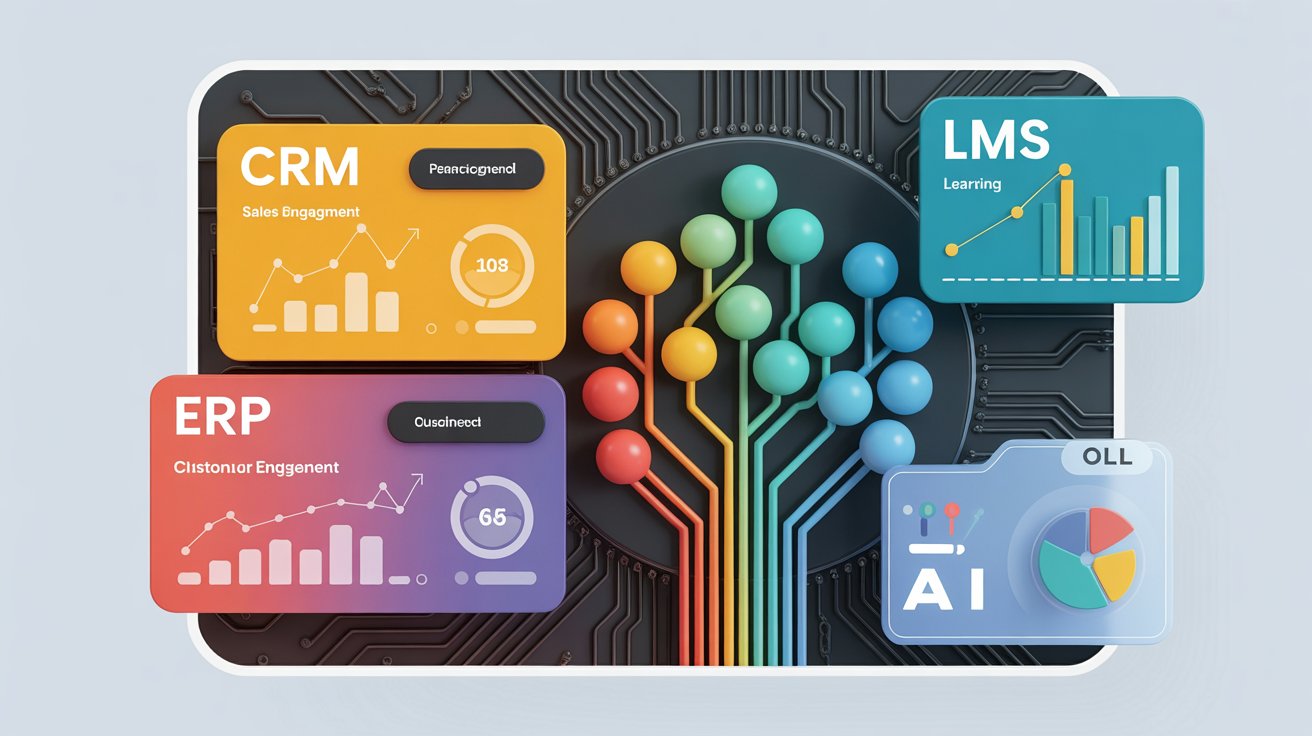

MLM businesses thrive on large networks, fast growth, and continuous distributor engagement — but managing leads, commissions, logistics, and training across hundreds or thousands of members can quickly become chaotic without the right tools. That’s why modern MLMs need CRM (to manage relationships and recruitment), ERP (to streamline operations, inventory, and payouts), and LMS (to train and retain distributors). Together, these systems create a powerful, automated ecosystem that drives transparency, efficiency, and scalability — turning complex network marketing operations into data-driven, growth-ready enterprises.
In an era where network-marketing (also called multi-level marketing, MLM) companies are scaling across geographies and digital platforms, the technology stack behind them must evolve too. To stay agile, transparent and efficient, MLM firms are increasingly integrating three critical enterprise systems — Customer Relationship Management (CRM), Enterprise Resource Planning (ERP) and Learning Management Systems (LMS) — with their dedicated MLM/Compensation-software platforms. In this article we’ll deep-dive into how this integration works, why it matters, what the market data says, and what trends are shaping the future.
In this article we’ll explore what signals indicate your business has outgrown a generic CRM, delve into real-time market statistics, and map out the latest industry trends that make specialized MLM software the winning choice.
Unlike a standard sales operation, an MLM business has:
A generic CRM or ERP alone will struggle to accommodate these demands. As one industry article notes:
Thus, integrating specialized MLM software with enterprise systems becomes essential for scalability, transparency, and operational efficiency.
When CRM + ERP + LMS are tightly integrated with MLM software, you get a unified ecosystem. Some of the benefits:
These benchmarks underline the importance of integration as an investment in growth and efficiency, not just a “nice to have”.
| Metric | Before Integration | After Integration |
|---|---|---|
| Administrative cost for distributor onboarding | Baseline | ~ 28% reduction (reported) |
| Onboarding time for new distributors | Slow, manual | ~ 67% faster (reported) |
| Distributor retention | Lower | ~ 43% higher in integrated case |
| Scaling ability (markets/countries) | Limited | ~3.2× higher growth potential |
Modern platforms are built with open APIs to integrate CRM, ERP, LMS seamlessly, reducing custom code. The MLM integration white-paper emphasises modularity and cloud-native architecture.
LMS is no longer isolated. Integrated learning and performance data (from CRM) drives personalised onboarding/training for distributors & customers. Eg: “An LMS integration with a CRM like Salesforce can personalise learning paths …”
MLM businesses are expanding across languages, currencies, regions. Integration with ERP/CRM handles multi-currency payouts, tax compliance, localization, cross-border shipping. The challenges article emphasises this as a major area.
With integrated systems, companies can apply AI/ML to predict distributor churn, forecast sales by leg, recommend training modules, optimize commissions. The LMS/CRM integration article mentions analytics capabilities.
For network marketing businesses, speed of onboarding, quality of training, and distributor experience become key to retention. LMS integration ensures that from day-one, a new distributor has assigned training, sees their downline, gets CRM-driven outreach. The LMS trend article notes micro-learning, mobile learning as key.
Imagine a direct-selling company with global operations across 10 countries, offering health-supplement subscriptions via MLM compensation plans. Here’s how integration plays out:
Based on this integrated view, the company identifies that distributors who complete training within 7 days of enrolment have 35% higher retention, enabling targeted interventions.
Whether you’re a startup MLM business or an established network marketing enterprise, integration of CRM, ERP and LMS with your MLM software is no longer optional—it’s a strategic imperative. The market is being shaped by:
By integrating, you unlock higher retention, faster growth, lower admin costs and better visibility into your business. As one white-paper concluded: integrated platforms deliver 3.2× greater scalability.
The successful MLM enterprises of tomorrow will be those that treat technology not as a set of disparate tools, but as a connected ecosystem: CRM for relationships, ERP for operations, LMS for capability-building — all integrated with MLM software that handles the unique dynamics of network marketing. If you’re still running isolated spreadsheets, manual commission calculations or disconnected training platforms, now is the time to future-proof your business.
It’s the process of connecting customer, business, and learning systems with MLM platforms to automate distributor management, sales, and training.
CRM integration helps track leads, manage customer relationships, and streamline distributor onboarding for faster growth and retention.
It enables automated commission calculations, inventory management, and multi-currency transactions, ensuring smooth back-office operations.
LMS systems deliver product training, onboarding courses, and compliance education to distributors, boosting engagement and retention.
In 2025, AI-driven analytics, cloud-native APIs, and modular microservices are shaping the future of integrated MLM ecosystems.
They create a unified digital ecosystem: CRM manages leads, ERP handles logistics, and LMS empowers distributors with knowledge.
Integrated systems can increase scalability 3.2×, reduce onboarding time by 67%, and improve distributor retention by 43% (Epixel report).
Modern SaaS-based solutions offer modular APIs, making CRM, ERP, and LMS integration affordable even for small MLM ventures.
Select vendors offering open APIs, real-time dashboards, and experience in multi-tier compensation logic and compliance management.
The future is data-driven — AI-powered insights, real-time dashboards, and gamified training experiences will define next-gen MLM systems.
👉 Try the official MLM Software Demo for Your MLM Business
and experience what MLM Software looks like when it’s powered by the best.
💌 Or, check out our blog
to compare top direct-selling companies, get insider reviews, and learn how to grow your income ethically in the wellness niche.